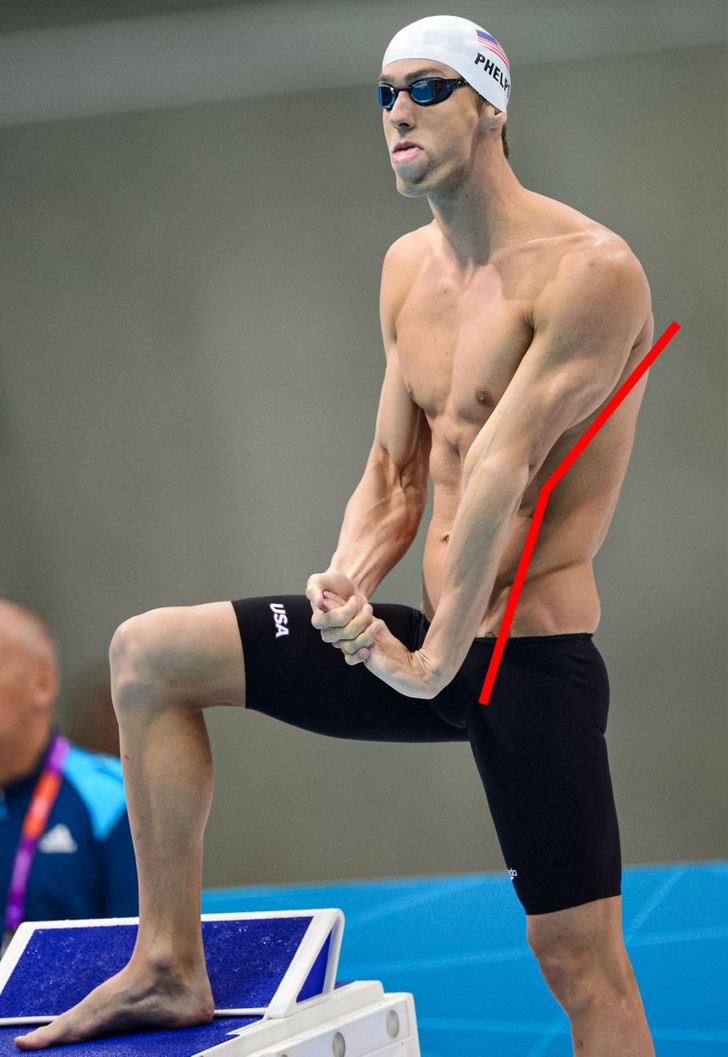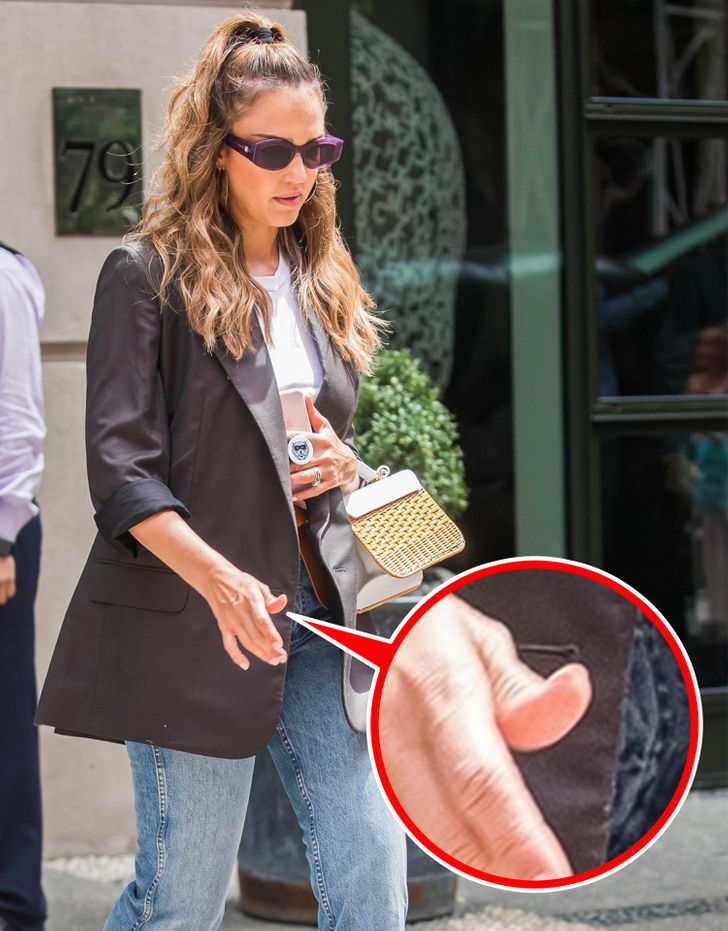Nope... no can do >.
If You Can Do These 5 Exercises You Might Be More Flexible Than the Average Person
There are people who have the ability to move their limbs more or less freely thanks to a range of motion that is greater than normal. That’s another way of saying that they have greater elasticity and are therefore much more flexible than other people. This ability is known as hypermobility, and it can be an incredible asset to athletes and even artists, like stuntmen (or women) or circus performers.
Bright Side put together a series of characteristics that people with greater elasticity seem to have. Keep reading below if you want to find out if you’re a person with hypermobility. Who knows, you might even become a professional stuntman or woman!
Beighton’s test
The Beighton test is a medical test to determine how much elasticity a person has. Needless to say, It is always best to have all the following exercises qualified by a specialist. This test consists of 5 exercises designed to push your joints’ flexibility to the limit. These movements are graded by a specialist on a scale from 1 to 9. One point is added to your score for every part of the body with which you successfully complete the exercise. So, for example, you can earn 2 points with your left and right hand, one for each, as long as the exercise can be done correctly with both.
Beighton, who eventually developed this test, considers a person with 4 or more points to have hypermobility. However, even if the resulting score is useful, the test does have some flaws. For example, it shows which parts of the body are more elastic, but does not indicate how hypermobile someone is. It also doesn’t include some important joints like the shoulders and the ankles.
Exercise 1: Bend your elbow(s) backward.
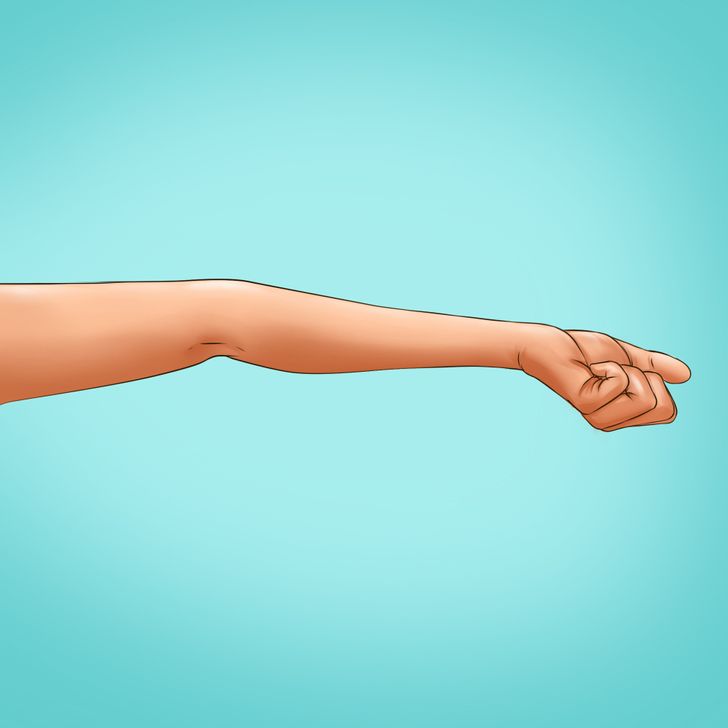
The idea is to extend your arm out as far as you can. If you bend your wrist outward, it will be easier to extend it. If the angle formed by the limb goes over 10° or more, that counts as a point. Try it with both arms, one at a time, and remember to add one point for each.
Exercise 2: Bend your thumb back toward the front of your forearm.
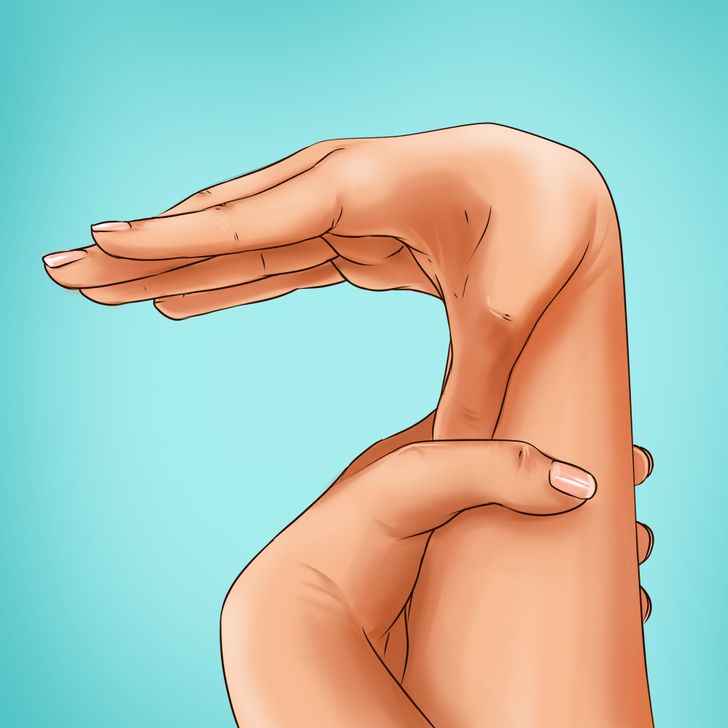
Place your arm at a 90º angle, bend your wrist inward, extend your thumb and, with the help of your opposite hand, pull it slowly toward your forearm, until it touches it. If you can manage to do this, add one extra point per each thumb.
Exercise 3: Bend your little finger down at a 90° angle to the back of your hand.
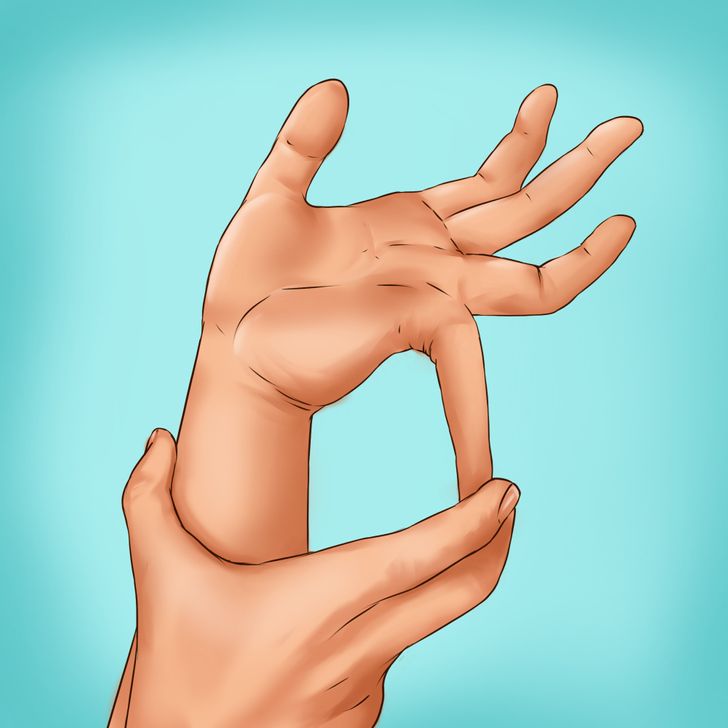
There are 2 versions of this exercise. For the first one, you have to place your palm facing upward and take your little finger with the other hand’s fingers to pull it downward, like you see in the illustration above. The second version consists of doing the same thing, except that instead of using just one finger, you pull all the fingers of your hand. Repeat the procedure for each hand and add a point for each hand if all of your fingers can bend more than 90°.
Exercise 4: Bend your knee backward.
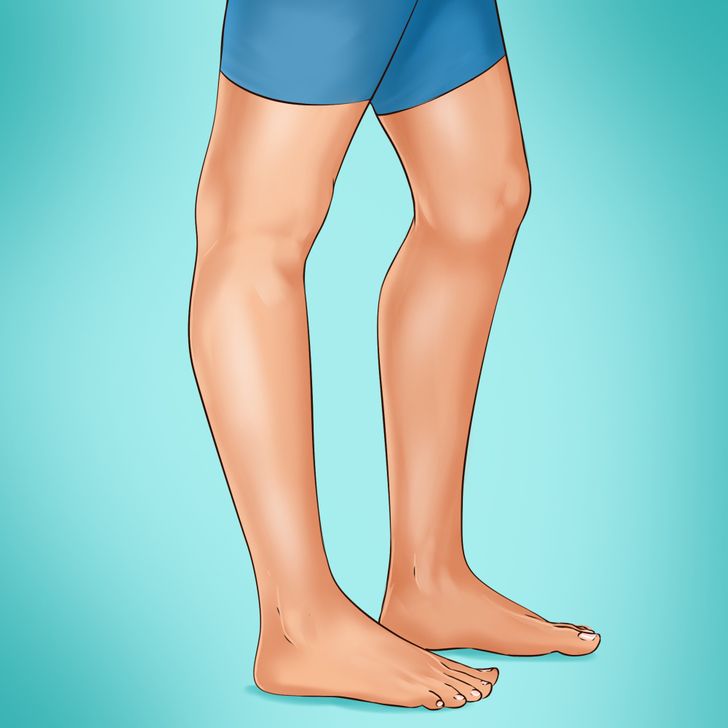
While standing, put all your weight on one leg and try to bring your knee back (as opposed to bending it forward) as far as possible, to extend the whole leg. Repeat the procedure for both legs. Remember to add a point for each leg where you are able to bend your knees back more than 10°.
Exercise 5: Try to put your hands flat on the floor, while keeping your knees straight.
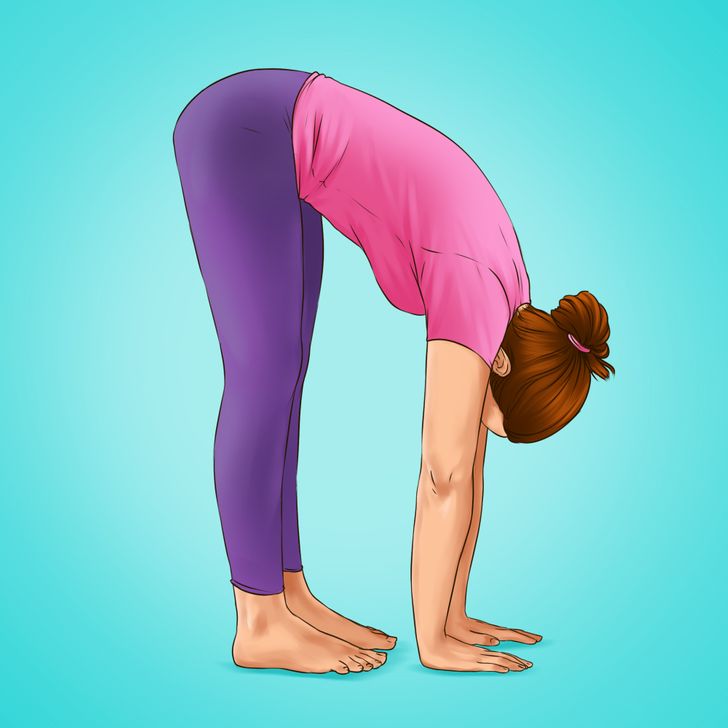
Stand up and put both legs together. With your feet firmly set on the ground and without bending your knees, try to touch the floor with the palms of your hands. Add one point for each palm that successfully touches the floor.
It’s score time! If you got more than 4:
If you scored more than 4 points on the above test, that means you could have joint hyperlaxity syndrome. It sounds scary, but in most cases, it isn’t harmful and most people are able to live with it without having issues. That’s why it’s also known as benign joint hypermobility syndrome (BJHS). But remember: it’s impossible to confirm whether or not you have this condition without being diagnosed by a qualified physician.
The difference between people with benign joint hypermobility and those without it is simply that their collagen fibers and other connective tissue proteins (basically the stuff that their body is made of) are more flexible. Those fibers, by the way, are responsible for giving strength and resilience to muscles, tendons, cartilage, and other parts of the body.
Although the condition is benign, in rare cases it can cause complications. A few of those include joint dislocations, tendonitis, capsulitis, sprains, lower back pain, scoliosis, flat feet, knee arthrosis, varicose veins, hernias, and even anxiety and depression.
There are some measures that can be taken to prevent this from happening:
- Perform relaxation exercises.
- Avoid extreme sports or direct contact sports.
- Do muscle strengthening exercises (low load), and preferably, isometrics.
- Stretch your muscles.
- Avoid overloading your joints.
- Avoid sedentarism.
And if you got less than 4:
This means you’re not as flexible as someone with BJHS. But not having more flexibility than usual is not a bad thing! On the contrary, it means that you’re in perfect condition to do any sport or perform any activity. However, if for some reason you’d like to increase your flexibility, there are a few exercises that could help you achieve this (if you do them consistently and with medical approval):
- Piriformis stretch: Sit on the floor with both legs extended in front of you. Cross your right leg over your left and keep your right hand behind your body. Place your left hand on your right quad or left elbow. Repeat on the other side.
- Lying pectoral stretch: Lie on your stomach with both arms out to the side, giving your body a “T” shape. Push off the ground with your left hand and bend your left knee. Roll to your right side until you feel it in your right-side pectoral muscles. Repeat using the opposite side.
-
Standing hamstring stretch: Stand up, bending your head and torso forward as much as you can. Wrap your arms around the backs of your legs. Hold this position for around 45 seconds to 2 minutes. Bend your knees as you finish.
-
Pretzel stretch: Lie on the floor on your left side. Bend your right knee and hip up toward your chest as much as possible before dropping it. Bend your left knee and grab your left foot with the opposite hand. Straighten your leg and torso and bring your top shoulder blade toward the floor. Turn your head to look over your right shoulder if you want a spinal twist.
-
Reclining bound angle pose: Lie on your back, bringing the soles of your feet together, allowing your knees to open up, moving them close to the floor. Hold this pose for around a minute or 2.
-
Knees to chest: Lie on your back and pull your knees into your chest with both hands, keeping your lower back to the floor. Keep this position for around a minute or 2.
-
Frog stretch: Begin on all fours. Slide your knees wider, mimicking a frog. Turn your feet so that they are flat on the floor. Shift your hips toward your heels. Move from your hands to your forearms, if possible. Keep this position for a minute or 2.
What was your score? Which exercise did you find the most difficult? Are you or do you know someone who is extremely flexible or can do movements that almost no one else can do? Tag them in the comment section!
Comments
5/5... yoga helps a lot if you ask me ;)
WHAT?? I guess I should start practicing yoga too... I was 0/5 :p
Yes!! You should!! I am now on a training program to become a certified teacher :) Yoga helps in almost EVERY aspect of your body!! :)
I have seen a lot of apps - free and paid - so I guess maybe I could try. All I need is just a yoga mat!!
You can start with some relaxing poses and then move to more advanced ones to increase flexibility :)
I can do 5/5 too
its called Ehlers-Danlos Syndrome, and it isnt a good thing. It can be very painful and life-threatening. Not only are our extremities flexable, so are our internal organs which can cause major issues.
How can I make my body that flexible that more.
This article is completely false and irresponsible! I meet 8/10 on the Beighton and have been diagnosed with Ehlers Danlos Syndrome by a geneticist. It IS NOT BENIGN!!!! It affects every system in the body and causes chronic pain, fatigue, GI issues, heart issues and a lifetime of chronic illness. You should not be allowed to post this misinformation!
Wait so the overly bend elbow is not normal? huh.. I never thought it was that special
Can you bend it like that swimmer? ?
No ? that's a bit too much for me haha, but I can bend it quiet a bit
As a kid I was able to do this exercise 2
Related Reads
17 True Stories About Friends That Sound Like a Script for a Soap Opera

14 Innocent Souls Who Learned a Lesson the Hard Way

I Gave My House to My Son — He Betrayed Me in a Horrific Way

I Didn’t Want My Ex’s Wife at My Son’s Graduation — The Result Was Devastating

20 Girls Who Just Cut Their Bangs but Look Like They Got a Plastic Surgery
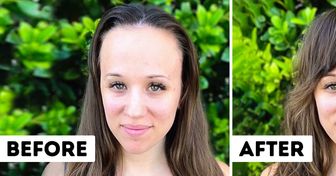
10 True Tales That Are As Creepy and Eerie As It Gets

10+ Comics Showing What Love Looks Like Before and After 30

Men and Women Have Very Different Ideas About Ideal Lip Size, According to Studies

10 Mistakes Most Parents Regret Making

I Overruled the Strict Vegan Menu for My Son’s Wedding

My Fiancé Wants a Joint Account, but I Don’t Want to Lose Control Over My Money

I Refuse to Babysit My 3 Stepchildren for Free

